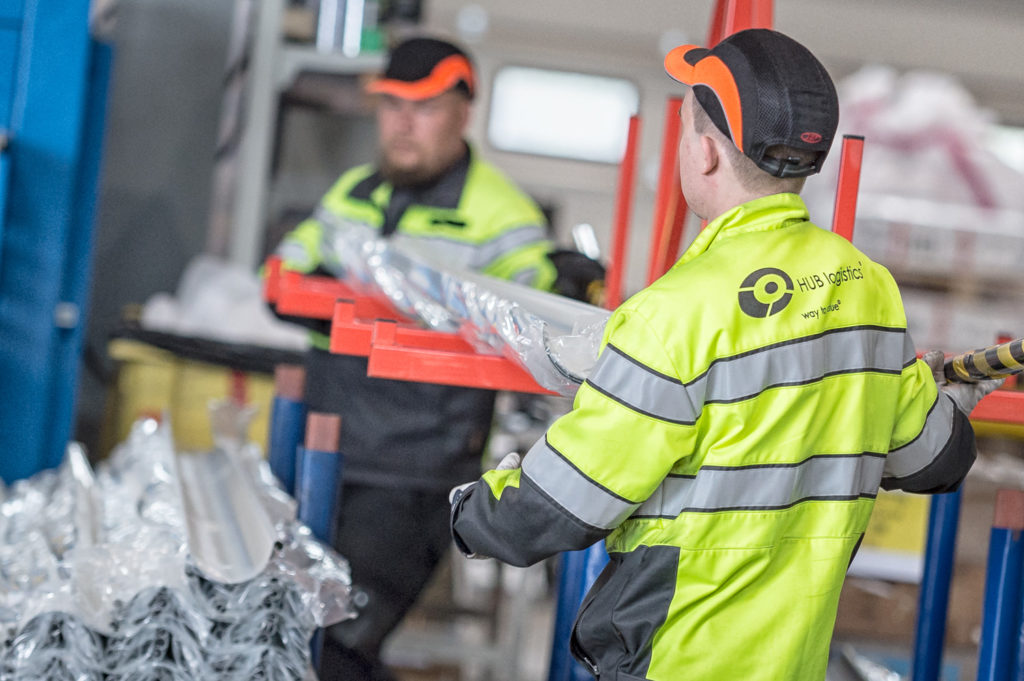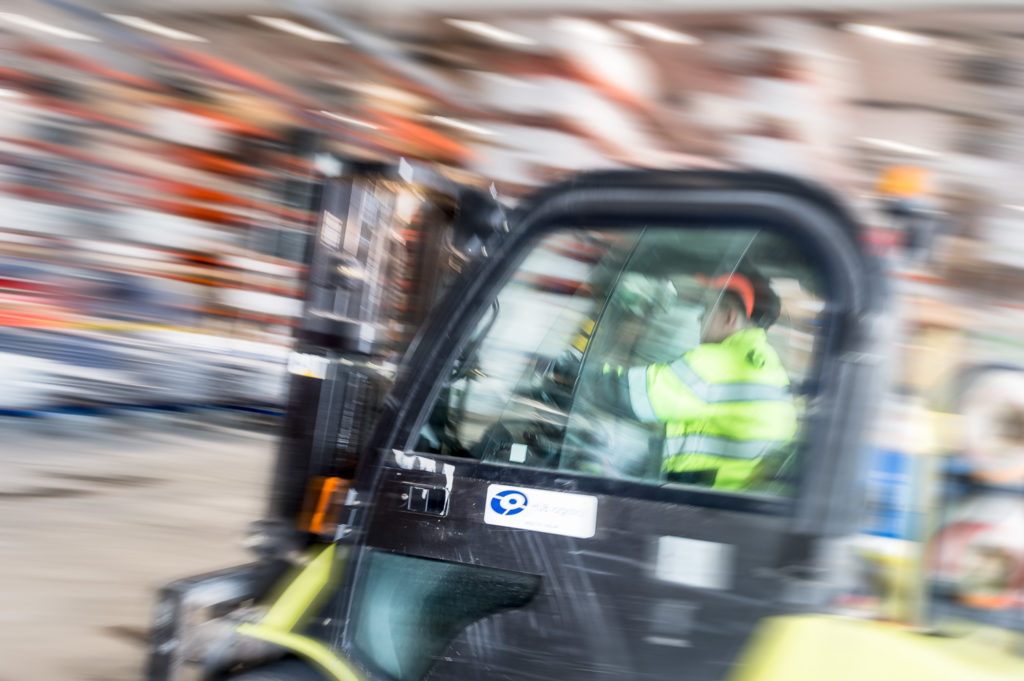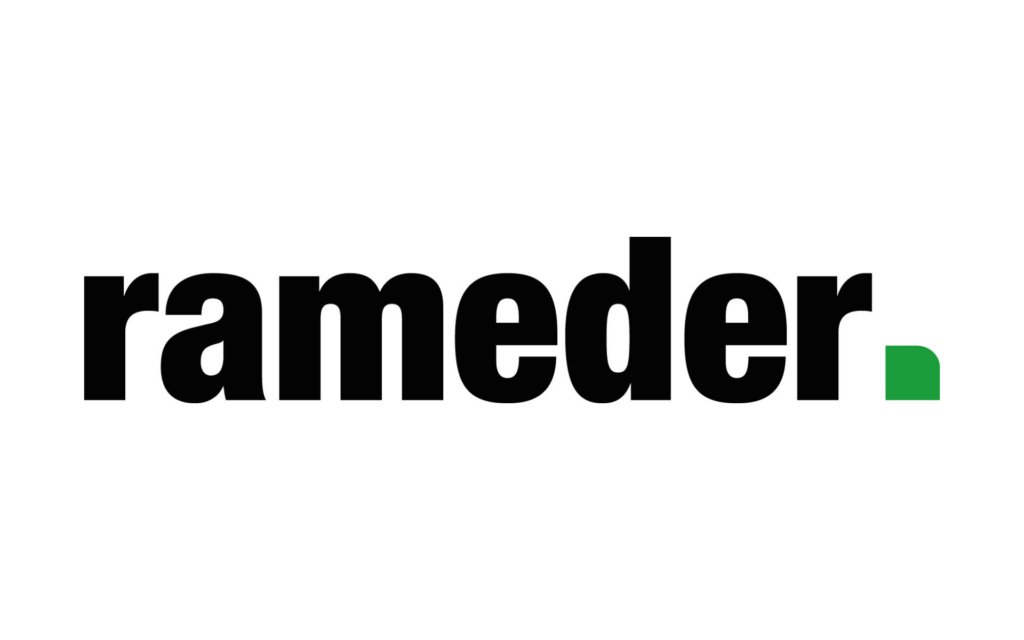In many companies, internal logistics is a secondary issue when the main focus is, for example, manufacturing products in a factory or treating people in a hospital. And so it should be. But when internal logistics is in order and investment is made in its development, it brings very good opportunities for the development of key functions, clarity of work and production efficiency, HUB Logistics business directors Janne Marttila and Mikko Heinilä say.
Internal logistics starts when, for example, material arrives at the factory and it starts to be unloaded into the factory’s warehouses from containers, trucks or train cars. And it ends when the finished product from production is sent to the end customer. External logistics will handle the goods from then on. Internal logistics therefore stays “inside the fences” and does not take advantage of highways. It is also in a way local logistics.
– Inside the factory, the material is unloaded from the transport unit and acknowledged as received, moved to the right place in the warehouse, until there is a need for it in production. Then the material is delivered to the production line inside the factory. When the product is ready at the end of the production line, it is packed in suitable packaging and loaded for transport, Janne Marttila lists.
– Inside the factory, semi-finished products are also transported between different points, for example from the paint shop to assembly. Taking care of the accuracy of balances and taking stock also belong to internal logistics.
Mikko Heinilä summarizes that internal logistics is the management of material and information.
– But actually it always supports some value stream and enables its operation. It therefore needs a process, service or event as a friend, which it supports with its own activity.
According to Mikko Heinilä, internal logistics is everywhere where goods need to be moved from one place to another.
– It’s in a hamburger restaurant, when the fryer has to get a steak from the fridge. It’s at the airport when you need to get a bag of candy on the store shelf. It’s in the hospital when you need to get equipment and supplies for the nurse. It is in industry when the installer needs different components. Whenever goods are moved, there is internal logistics. You just don’t always know how to think of it by that name.
With internal logistics, you increase production efficiency
Janne Marttila says that internal logistics does not in itself add value to the end product itself, because it does not get better, no matter how much parts and goods are moved inside the factory. But the less the end product is moved, the lower the risk of damage, for example.
– In internal logistics, the aim is to optimize transport distances. And the forklift or wagons are never transported empty, but there is always something on board also on the way back. It creates operations that are constantly more efficient.
A few decades ago, factories received goods, stored them next to the production line and, as a rule, production personnel picked up the parts they needed from the warehouse. Later, it was started to centralize the warehouses and it was found that the production staff should be at the production point and focus on the work they know how to do. Other people drive forklifts and do their own work in their team as efficiently as possible. Production efficiency increases.
Janne Marttila gives an example of a traditional production model:
For example, in a factory with 35 forklifts and 35 people working in each shift, each employee has his own forklift. In this situation, it would be worthwhile to get rid of every third forklift, and more space would be available in the factory. Internal logistics should therefore be separated into its own function. Then you get more power out of it, as well as safety and clarity.
According to Mikko Heinilä, internal logistics can best develop business and the main process. When thinking about acquisition, balance accuracy improves. Internal logistics includes the best internal logistics tools and monitoring: if you know how many components are in stock, the procurement will also be kept up to date. It is an essential link and information producer in the entire value stream.

How does internal logistics work at its best?
The basic prerequisite for smooth internal logistics is agreed response times and delivery schedules. If something is requested from the production line, clear schedules have been created for the product to be brought into production at the latest.
– In its simplicity, internal logistics is easy, but you have to focus on it and think about it as its own entity. Internal logistics serves the customer, and here the customer is production, says Janne Marttila.
Mikko Heinilä states that internal logistics is best when you don’t even notice its existence.
– At best, it creates an opportunity to develop the value stream it serves. Then the next stage is given the opportunity to develop forward. When internal logistics is outsourced, our task is to plan it so well that the user doesn’t have time to think about it. Then, with its help, opportunities are created for the development of the entire operation.
Continuous improvement and bigger reforms
– There are two lines in the development of internal logistics: continuous improvement, where ideas and small ten-minute things constantly come on the fly, and then strategic development, where we look further and study longer-term needs. Both tracks must be used, Mikko Heinilä reminds.
– The development targets are of course determined by the repayment, but also by the flow. In the end, however, the euros decide. There may be additional costs for a single function or event, but the whole is more affordable. If we can make things work faster or make things easier for the customer, that’s where success is determined.
According to Mikko Heinilä, small changes can be, for example, that the tools are in their right places, the pallets are in reasonable places, or a small automation is added to the system at some point with the help of a barcode. The ABC analysis of the products ensures a rational placement of materials. And when talking about a big renovation, a whole new property can be built next to the factory, from where the material is transported to the installers in wagons. That’s a longer project.
– In a medium-sized project, for example, a “layout change” can be made. The customer wants to manufacture even more products in the current premises, which means more space is needed for production. Then we have to adapt to smaller spaces in terms of internal logistics and plan to streamline what we do. It requires strict planning, but such projects have been successful.
Heinilä says that there is often a need for the space to be on the card, because the products have more and more features and therefore more material and components are needed. Then more internal logistics work is needed.
– Efficient storage, well-thought-out internal logistics and coordinating the customer’s environment and operations with internal logistics help to cope with space needs. Also, the fact that procurement is done closer allows for smaller warehouses.
Why should internal logistics be outsourced?
In many companies, internal logistics is a secondary issue, when the main focus is, for example, making products in a factory or caring for people in a hospital. And so it should be. Mikko Heinilä says that the company, which is well versed in internal logistics operations, is constantly on the lookout and monitors what opportunities arise from the world.
– We have been working with internal logistics for several years and have seen and learned with our customers how it works best. When it comes to outsourcing logistics, expertise is naturally the number one priority.
But can outsourcing promise savings or better operations? – Yes, you can, Mikko Heinilä assures. – Our pricing is based on work studies. When the foundation is in order, financial benefits will also come through expertise. When internal logistics works well – and in the future very well – it also brings very good development opportunities to the function it serves.
– We know how to calculate the costs of current internal logistics, but above all, we use our expertise to help identify where the customer can save.
The development of internal logistics will incur costs, but above all, savings
Janne Marttila reminds that every company already has some kind of internal logistics. If internal logistics is part of production, it is difficult to calculate total costs and know what good it produces.
– But when we start developing internal logistics, we calculate together with the customer what internal logistics costs now and what it would cost us if outsourced.
– When Timo works in production, picking up three packages a day from the warehouse, and Leena picking up four packages from the same warehouse, it is difficult to break down costs for internal logistics. Calculating the costs of these repeated transports is often forgotten.
According to Mikko Heinilä, the cost of developing internal logistics is quite large. At best, there won’t be much additional costs if the existing framework can be developed through continuous improvement. But the costs of the systems and their integrations come up quite quickly. If we start from scratch, we will have to acquire storage shelves and forklifts, as well as acquire premises.
Janne Marttila says that HUB logistics has been able to clearly show the benefits of developing internal logistics in its various projects.
– Many companies invest heavily in the development of production, but do not use their strength for the smoothness and efficiency of internal logistics. When it is outsourced to an experienced expert with resources, the benefits can be brought to the benefit of the whole.
– When the internal logistics are put in order, a development engineer from us will participate in the work for, say, two months. The company does not need to hire its own developer for full-time work, who would often also be a production engineer in a brand new environment.
Financial benefit comes naturally from improved efficiency. – In just one large destination with a few hundred people at work, a 7.7 percent annual gain in efficiency was reached. The quality also improved in every unit at the same time, Janne Marttila says.
Read more about the cooperation with HUB Logistics regarding the outsourcing of internal logistics on our services page.
The development of internal logistics and outsourcing respond to these problems
- There are challenges in the production of final products
- Delivery punctuality suffers
- Inventory balances do not match
- Assemblers have wasted time, searching and waiting
- Transparency or lack thereof/opacity
- Skilled personnel spend working time looking for and rummaging through things instead of inefficiently productive work
- The actual costs of internal logistics have not been mapped
- The work is messy and problems are easily repeated
- Staff workloads are uneven
- Not focusing on what you should
Outsourcing internal logistics brings clarity instead of confusion.
Contact us and we will tell you how things can be resolved.



